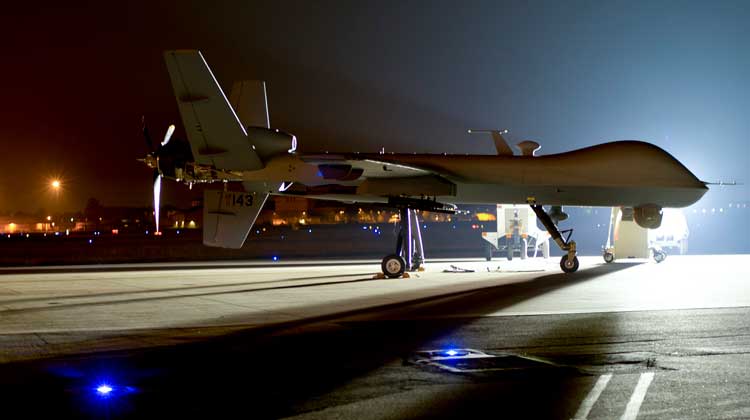
WASHINGTON—Current U.S. drone policy is less transparent and less accessible under the Trump administration, said panelists at a Stimson Center forum June 7. The event was focused on the release of the Stimson Center report An Action Plan on U.S. Drone Policy: Recommendations for the Trump Administration.
Rachel Stohl, managing director of the Stimson Center, called the report a cornerstone of Stimson’s work. The research team’s main purpose was to find out if Trump administration drone policies were transparent and legitimate.
“In short, the Trump administration’s drone policy appears to be less restrained, less transparent, and less accountable,” Stohl said, noting several changes from past administrations’ programs.
According to Stohl, the drone policies have changed by the tempo of strikes, the geographical location of where strikes occurred, and the amount of authority required to use drones against terrorist suspects in non-war zones. The CIA also has a greater role in conducting drone strikes.
Dan Mahanty, program director for the Center for Civilians in Conflict , said using drones as a first resort for force can have dangerous consequences.
“In the use of force, I think there is a potential risk of escalation in conflict in places where it may not have occurred before, or where it could have been tempered,” Mahanty said. “That’s something that shouldn’t be overlooked when the first thing you’ve got available to you is a lethal option.”
Additionally, Stohl described the lack of accessible information as a barrier to the team’s research. Moreover, there’s a question as to whether policymakers, congress, and the general public have proper access to drone statistics.
Jeff Smith, senior counsel at Arnold & Porter, national and homeland security law practice, explained that the reason for drone secrecy has much more to do with foreign governments not wanting to release drone information, which is something Washington can’t fix. But Smith’s hope is that the Trump administration will recognize that it is in the country’s best interest to be as transparent as possible.
Stohl’s final point addressed the degradation of the U.S. monopoly on drone manufacturing and exports. She said the United States has lost control of technology development, as most drone exports include only hardware.
Peter Lichtenbaum, a partner at Covington & Burling LLP, said that the United States is setting a precedent for other countries, which is why the United States must be cautious in making these policies.
“Other countries are watching very closely what we do, and that if we assert certain prerogatives, that will make it difficult for us to argue against other countries and certainly those same prerogatives,” Lichtenbaum said. “It is important to have international rules in this area.”
Lichtenbaum also noted the interesting shift of drones from a primarily military sector to a commercial sector, and how such a shift can pose a threat to “national, and even homeland security.” Commercial drones can be adapted to pose as threats if they fall into the wrong hands.
Stohl recommended having a public release of new policies regarding standards or procedures for drone use, a public release of annual drone strikes outside of U.S. war zones, and the casualties from those strikes. She also recommended a U.S. government strategic assessment of the efficacy and long-term effects of the drone program.
In addition, the team would like to see Congress have public briefings on law and policy related to security that are accessible to the public, as well as release how much funding is going into the drone program.
“We often hear that drones are a cheaper alternative, that it’s actually a cost-effective measure,” Stohl said. “We need to have a thorough accounting of what’s being spent on the U.S. drone programs, particularly in areas where there’s less transparency.”
Tahreem Alam is a staff writer for Homeland411.
© 2018 Homeland411
Click here to subscribe to the Homeland411 newsletter.